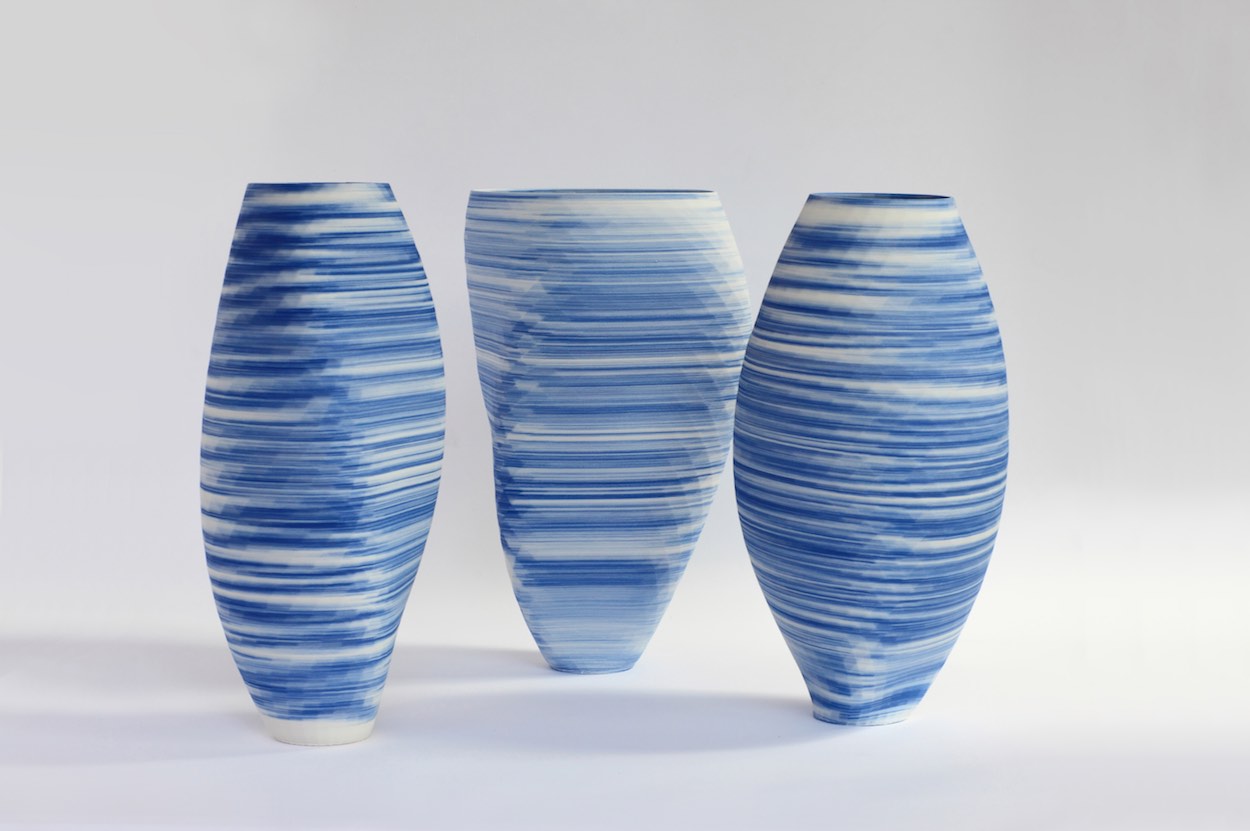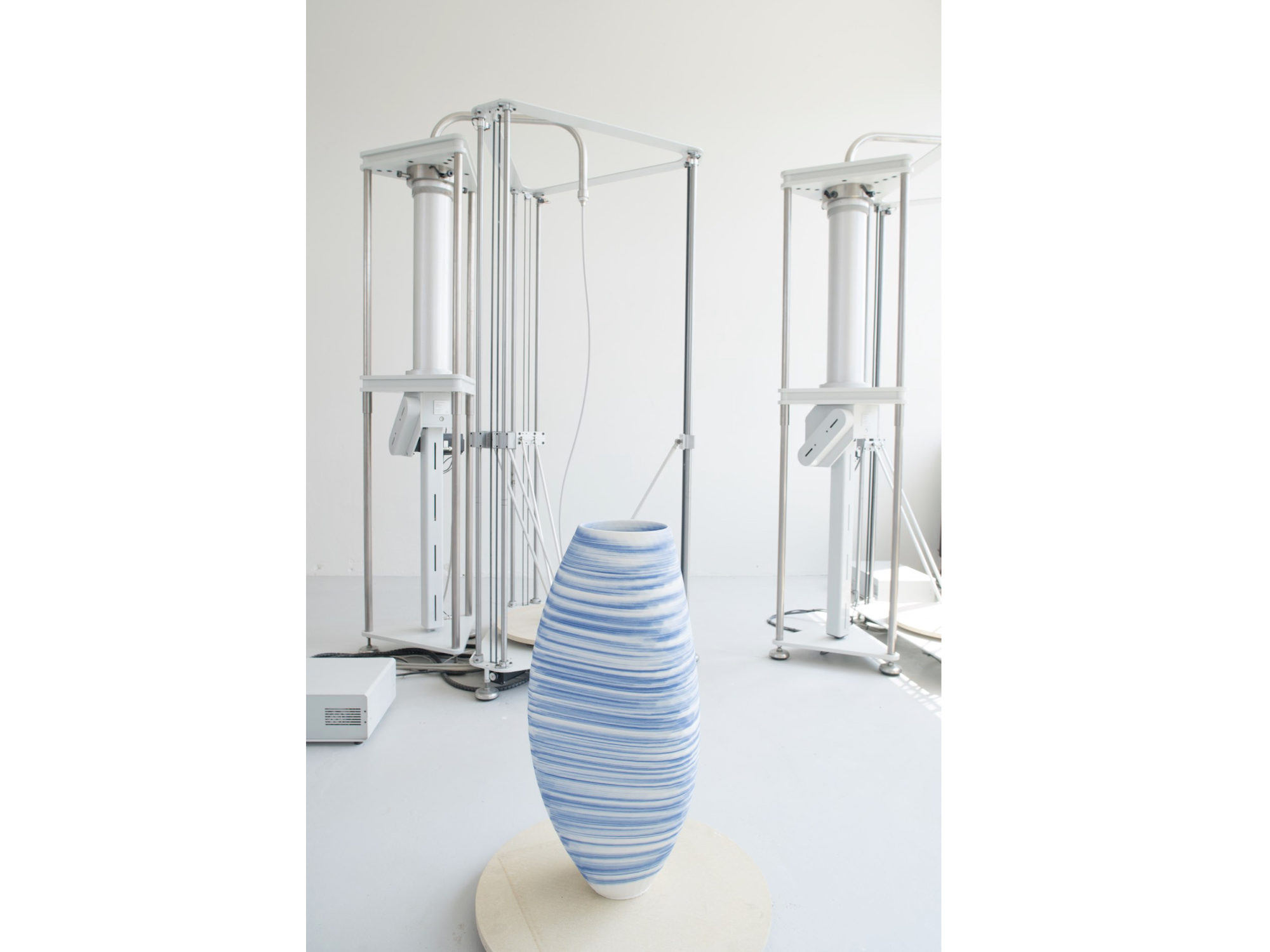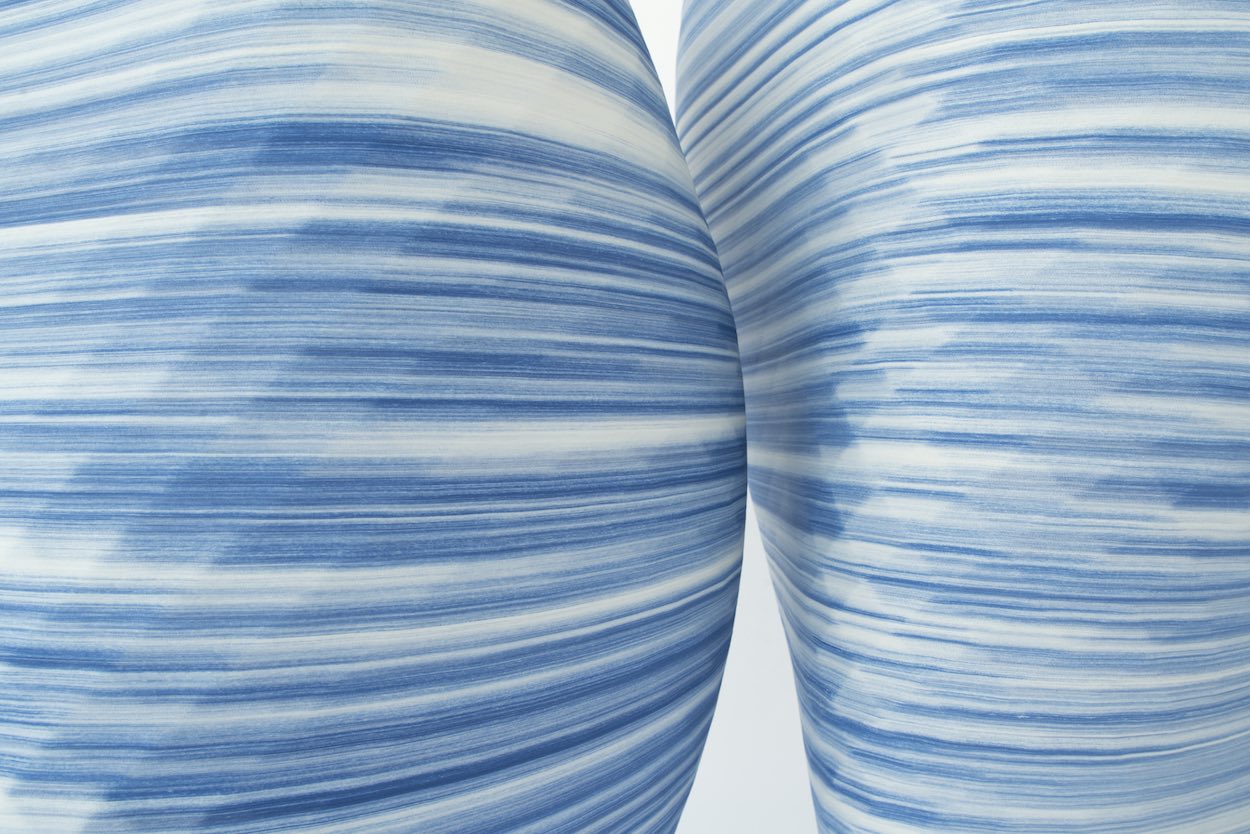To Olivier van Herpt, 3-D printing feels rather kil—the word for “bleak” in his native Dutch. As the 29-year-old explained to us last summer, he’s felt that way since the method first garnered attention back in 2012, when he was studying product design and ceramics at the Netherlands’s Design Academy Eindhoven. To him, 3-D printing presented a paradox: At the same time that it allows a person to create otherwise impossible shapes, it also removes her from the making process entirely. So, like any curious, enterprising young person, he took it upon himself to set things straight. He built a machine with a piston-based extruder that could build vessels the size of a small child using hard clay (because with wet clay, the large forms collapsed). Unlike traditional 3D-printing machines, van Herpt’s is unenclosed and prints pieces out in the open, allowing him to pause it mid-print and sculpt the clay. The resulting pieces are rhythmic and alien-like, and make you want to look closer. They’ve been exhibited at Amsterdam’s Stedelijk Museum, New York’s Cooper Hewitt, Smithsonian Design Museum, London’s Design Museum, Paris’s Centre Pompidou, and elsewhere around the world.
Among van Herpt’s latest projects is “Blue and White” (2018), a series of faceted, thin-walled vases that riffs on Holland’s Delftware, a centuries-old style of pottery marked by its exclusive use of ocean-esque hues. Instead of painting the clay’s surface, van Herpt kneads cobalt blue pigment into the clay before it’s loaded into the extruder. It is then printed, using his machine, into organic forms created by string-like layers of the two-toned clay. Each piece, unveiled last month at Galerie VIVID’s booth during Design Miami/ Basel, stands around three feet tall and, thanks to its streaked exterior, appear as if it’s spinning in space.



